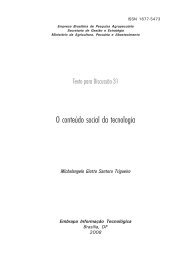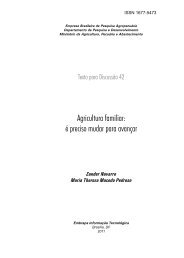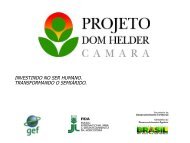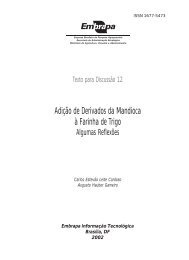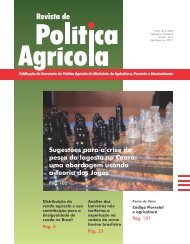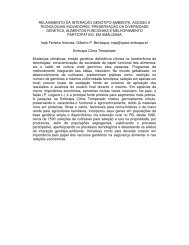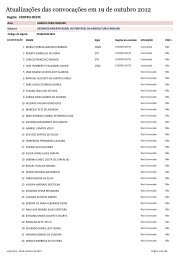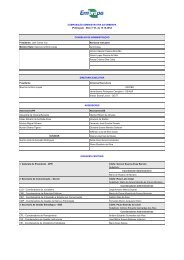Ministry of Agriculture, Livestock and Food Supply - Embrapa
Ministry of Agriculture, Livestock and Food Supply - Embrapa
Ministry of Agriculture, Livestock and Food Supply - Embrapa
You also want an ePaper? Increase the reach of your titles
YUMPU automatically turns print PDFs into web optimized ePapers that Google loves.
Large investments in RD&I would be necessary over a long period <strong>of</strong> time<br />
in order to produce the most adequate raw material for each region <strong>and</strong> a sufficient<br />
amount <strong>of</strong> each raw material to supply the biodiesel industry in an economically<br />
viable manner. Research should focus on increasing the energy density <strong>of</strong> the<br />
oleaginous species, going from the current oil yield24 <strong>of</strong> 600 kg/ha to approximately<br />
5,000 kg/ha. Initially this could be achieved by improving production with a view to<br />
increasing the physical productivity <strong>of</strong> the raw material.<br />
At the same time, medium- <strong>and</strong> long-term research should try to<br />
increase the contents <strong>of</strong> the energy components (cellulose, sugar, starch,<br />
oils, etc.) <strong>of</strong> the oleaginous plant currently being used <strong>and</strong> incorporate new plants,<br />
particularly tropical plants, with high oil producing capacity per unit area.<br />
Biotechnology <strong>and</strong> traditional plant breeding should play a relevant role in<br />
achieving those objectives either through research in new varieties <strong>and</strong><br />
development <strong>of</strong> genetically modified organisms, or by adapting the energy crops<br />
to the various agro-ecological conditions.<br />
Lastly, the expansion <strong>of</strong> bi<strong>of</strong>uels in the country will also depend on<br />
technological innovations, improvement <strong>of</strong> industrial processes <strong>and</strong> increasing<br />
the efficiency <strong>of</strong> the energy sources.<br />
Regional prospects<br />
North Region<br />
The North Region holds the largest part <strong>of</strong> the national territory covered<br />
by native forests – the Amazonian biome – in addition to Cerrado areas in the<br />
states <strong>of</strong> Tocantins, Rondônia, Pará, <strong>and</strong> Roraima. The Amazon forest harbors<br />
a great variety <strong>of</strong> native species, including palms, which could contribute to<br />
reducing our dependency on petrodiesel. To that end local communities should<br />
be organized around simple extractivist activities or agro-forestry exploitation.<br />
There are more than 5-million hectares already deforested <strong>and</strong> appropriate<br />
for cultivating African palm.<br />
Pará is the largest African palm oil producer in the country: close to<br />
100,000 tons p.a. from a 50,000-ha cultivated area, a good part <strong>of</strong> which has<br />
not yet reached maturity. African palms start producing fruits four years after<br />
planting, attain maturity on the 7th year, <strong>and</strong> maintain high productivity levels<br />
24 An energy-density increase would help reduce the pressure due to the incorporation <strong>of</strong> new areas<br />
<strong>and</strong> the inducements to destroy the environment, as well as the unplanned settlement <strong>of</strong> the<br />
agricultural frontier.<br />
85



